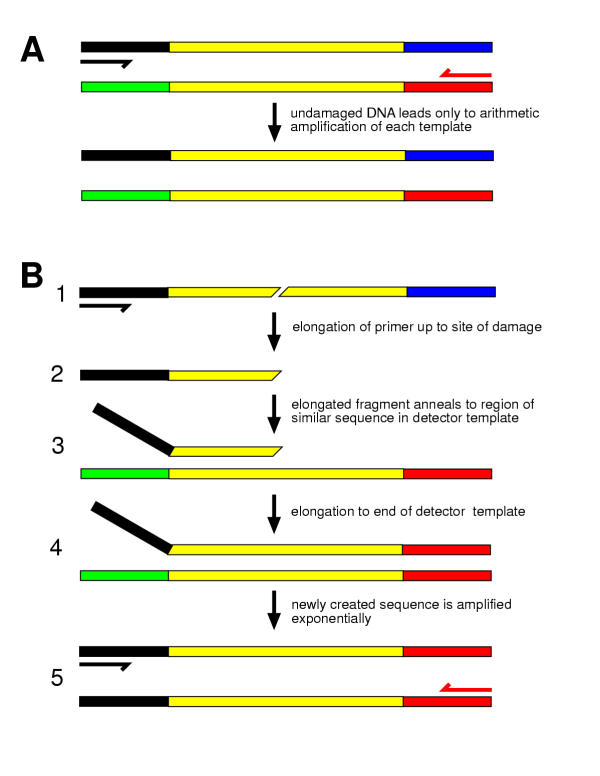Figure 1.
The principle of Bridging PCR (BPCR) A. Only arithmetic amplification occurs when there are two templates and two primers but only one primer is complementary to each template. B. Consider the case in which two templates share a central region of similar sequence (shown in yellow), flanked by regions of different sequence (black, blue, green, red). 1) If one template is interrupted, then its primer can extend only up to the point of interruption. 2) Synthesis up to the break creates a new 3' end at the site of the interruption. 3) On the next round of PCR the new 3' end created by the interruption anneals to the second template is in the region of shared (yellow) sequence and, 4) primes synthesis to the end of the second template. 5) Extension to the end of the second template creates a recombinant molecule with both primer binding sites. This new molecule is exponentially amplified in subsequent rounds of normal PCR.

